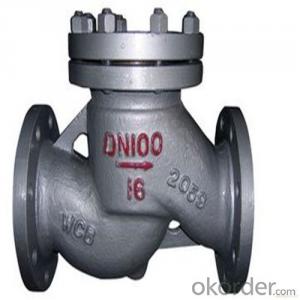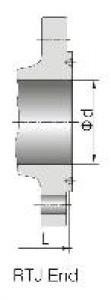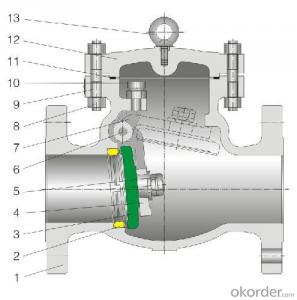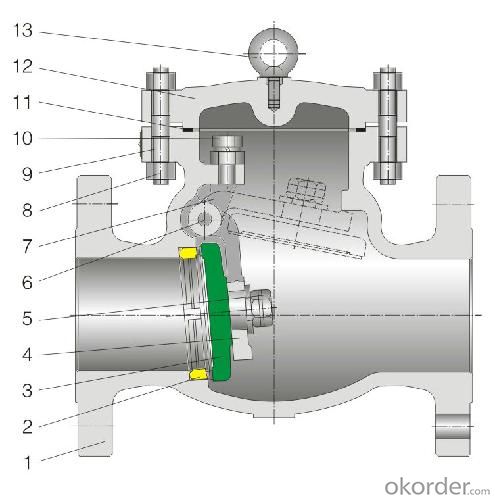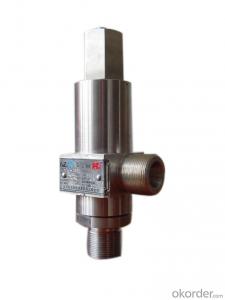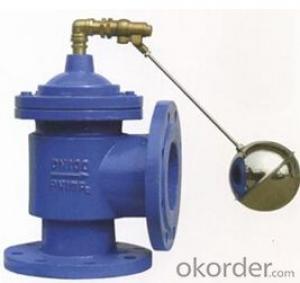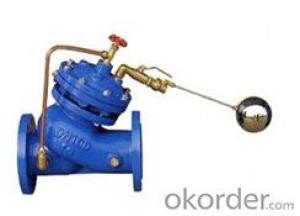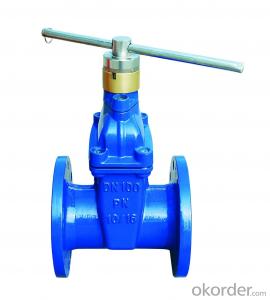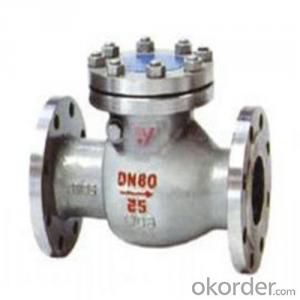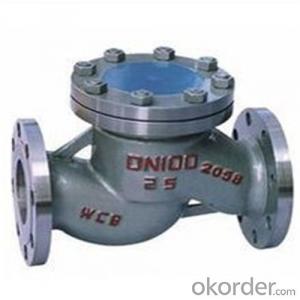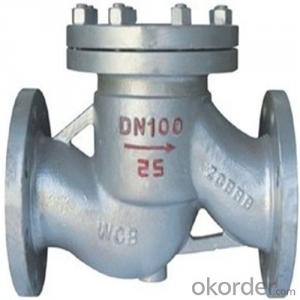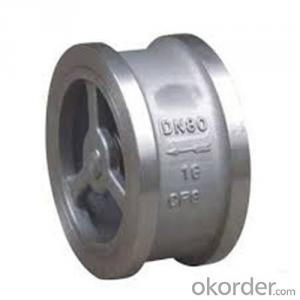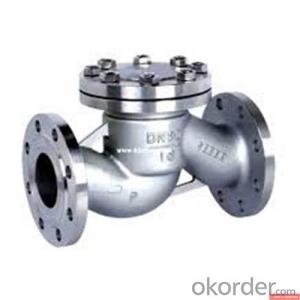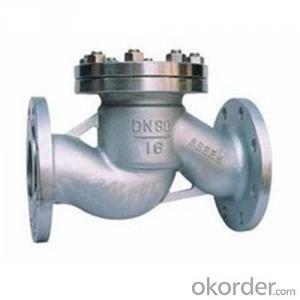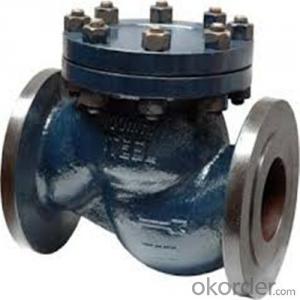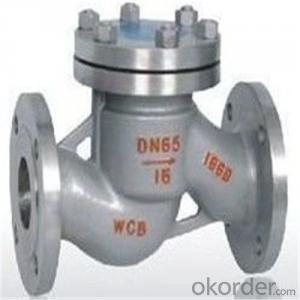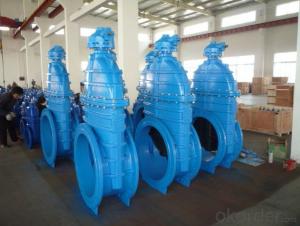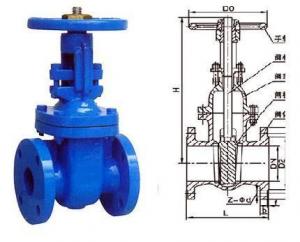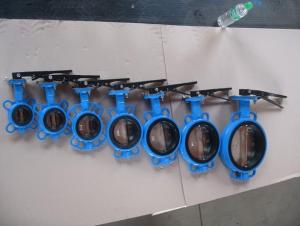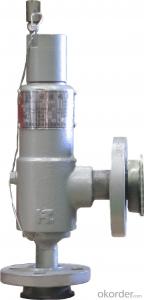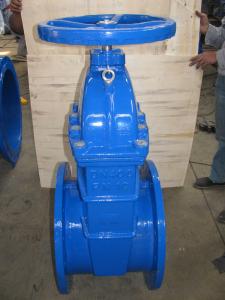API Cast Steel Lift Check Valve Size 150 mm
- Loading Port:
- Shanghai
- Payment Terms:
- TT OR LC
- Min Order Qty:
- 10 pc
- Supply Capability:
- 100 pc/month
OKorder Service Pledge
OKorder Financial Service
You Might Also Like
API Cast Steel Lift Check Valve 150 Class
The features of Cast Steel Lift Check Valve
Bolted Bonnet;Swing and lift disc;Metallic seating surfaces.
Body and Bonnet Connection of Cast Steel Lift Check Valve:
The body and bonnet of Class150~Class900 check valves are usually with studs and nuts.And the body and bonnet of Class1500~Class2500 check valves are usually of pressurized seal design.
Body-To-Bonnet Joint of Cast Steel Lift Check Valve:
Stainless steel + flesible graphite wounded gasket is used for Class 150 and Class 300 check valve;Stainless steel + flexible graphite wounded gasket is used for Class 600 check valve,and joint gasket is also optional for Class 600 check valve;Ring joint gasket is used for Class900 check valve;Pressurized seal design is used for Class 1500~Class 2500 check valves.
Seat of Cast Steel Lift Check Valve:
For carbon steel check valve,the seat is usually forged steel.The sealing surface of the seat is spray welded with hard alloy specified by the customer.Renewable threaded seat is used for NPS<10 check="" valves="" and="" welded="" on="" seat="" can="" be="" also="" optional="" if="" being="" requested="" by="" the="" customer.welded="" is="" used="" for="" nps="">12 crbon steel gate valves .Forstainless steel check valve,integral seat is usually adopted ,or to weld hard alloy directly integrally.Threaded or welded on seat is also optional for stainless steel check valve if being requested by the customer.
Parameter of Cast Steel Check Valve:
Standard Criteria | ASME/ANSI/API customize |
Pressure Rating | 150 Class 300 Class 600 Class 900 Class 1500 Class 2500 Class customize |
Valve Size | 50 mm 65 mm 80 mm 100 mm 125 mm 150 mm 200 mm 250 mm 300 mm 350 mm 400 mm 450 mm 500 mm 600 mm 650 mm 700 mm 750 mm |
2 inch 2.5 inch 3 inch 4 inch 5 inch 6 inch 8 inch 10 inch 12 inch 14 inch 16 inch 18 inch 20 inch 24 inch 26 inch 28 inch 30 inch customize | |
Actuator | Automatic customize |
Connection | Butt Welding Flange RF Flange RTJ customize |
1-Body Material | A216 WCB A351-CF8 A351-CF8M customize |
2-Seat ring | A351-CF8 A351-CF8M A105+13Cr Tool Steel+A105 customize |
3-Disc | Tool Steel+A216 WCB A351-CF8M A351-CF8 A216 WCB+13Cr customize |
4-Arm | A351-CF8 A216 WCB A351-CF8M customize |
5-Nut | A194 8M A194-8 A194 2H customize |
6-Arm pin | A182-F6a A182-F316 A182-F304 customize |
7-Yoke | A351-CF8 A351-CF8M A216 WCB customize |
8-Bonnet nut | A194 8M A194-8 A194 2H customize |
9-Bonnet bolt | A193-B8 A193-B8M A193-B7 customize |
10-Bolt | A193-B7 A193-B8 A193-B8M customize |
11-Gasket | graphite+304 graphite+316 customize |
12-Bonnet | A216 WCB A351-CF8M A351-CF8 customize |
13-Eye bolt | A181 customize |
Design Standard | API 6D BS 1868 customize |
Connection Standard | API 605 ASME B 16.25-2007 ASME B 16.47A ASME B 16.47B ASME B 16.5 MSS SP-44 customize |
Test Standard | API 598 API 6D customize |
Face to Face | ASME B 16.10 customize |
Pressure-temperature ratings | ASME B 16.34-2004 customize |
Wall thickness dimension | API 600 BS 1868 |
FAQ of Cast Steel Check Valve:
Q1:I can’t find the type of steel check valve which I need. what can I do?
The chart above only lists out some common composition of steel check valve parts.We may provide other different parts material composition according to the customer's request or the actual valve working condition.
Q2:Which certification do your products pass?
Our products are in accordance with ISO 9001、ISO 14001、API 6A、API 6D、TS CE、API607/6FA/BS6755.
- Q: From searching around I feel that I need to replace this on my vehicle. Is the Suction Control Valve different from the Idle Control Valve? Sometimes at a stop light the engine will stall. A couple times it has happened while driving when coasting to a turn or stop.
- I would think the suction control valve is what is also called a purge valve and is part of the emissions control circuit. It is not the same as an idle control valve nor will it cause poor running when it fails. The idle control valve will however..
- Q: What is the best procedure to check/adjust valve clearances? This engine is a perkins diesel inside of a cat generator. I know that he exhaust valve is .018 and the intake valve is .008.
- Adam S, you're both right and wrong as far as needing to adjust valves. I changed 2 shims in 100,000 miles on my Kawasaki KZ1000, but my 1300 Kaw touring bike with nearly identical valve train needs checking and adjuuting every 6,000 miles or so. Go figure. Kneedragger, since your bike requires manual adjustment, you're valve train is either going to have a rockerarm type system with threaded screws and locknuts (easy) or use shims of various thicknesses to adjust the clearance (harder). Some have the shim on top of the 'bucket that covers the valve spring. With these, you will need a small, rather inexpensive tool specifically made for your model engine to compress the spring, allowing you to remove the shim. Other engines have the shim under the bucket, requiring you to remove the camshaft to change the shim. No special tools needed here, but reinstalling the camshafts correctly is absolutely vital. While this proceduere sounds rather intimidating, just remember that checking is all that may be necessary and no adjustments will need to be made. To check clearances, the idea is to turn the camshaft to that the cam lobe is pointing away from the valve and then measure the clearance with a feeler gauge and see how that compares to the recommended clearances. On shim type, clearances nearly always tighten and if the clearance is too little, you will need to install a thinner shim. I write down the clearance for each valve each time I check the clearances. If one valve tightens up faster than the others, this will give you a heads up to a possible future problem. Or, you may find they are ok this time but at the next check, you find some that need adjustment and will decide to take it to the shop that time. After a few checks and recording the clearances, you'll get a pretty good feel for how often you need to check them again. If you decide to do it yourself, by all means, get a shop manual.
- Q: Is there a more technically correct name for a valve that slowly opens, allowing increased pressure in a water line without blowing the end off?
- I've always known them to be simply called motorized valves, but they aren't specifically made to prevent instantaneous pressure build up. They are usually installed as a convenience type of thing and in lieu of solenoid valve which WOULD be an almost immediate full pressure situation, but any valve other than a solenoid activated one will allow for slow build up of pressure. A motorized valve just lets you do it automatically and you don't have to be right at the valve location to open it. Al
- Q: My 97 Tahoe has a leaking A/C pressure valve. I went to charge the system yesterday, and when I finished I took the hoses from the charging gauges off. The pressure side valve leaked. I pressed it down with a small screwdriver yet still couldn't get it to seat. I looks like it might have a damaged seal around the valve.Can I replace the valve? And if so, how. Or do I have to replace the entire hose assemble as they connect to the compressor?Thanks
- This is a very common problem and you will need to reclaim the freon and replace the service port only and not the hose, however you will need a special socket to remove it or you will damage the hose as well as the new valve......... After you are finished you will need to evacuate and recharge the system complete and dont for get to add refrigerate oil back as well.
- Q: Hey I'm high rite now and i have a checkup for mitro-valve prolapse tomrow, i was wondering if they will take my blood and see THC in me....
- Get as high as you can and stay up all night partying!!!
- Q: I was diagnosed with Mitral Valve prolapse...I'm 21, 5.5 tall and 130lbs, I had a healthy lifestyle...my doctor said that my case isn't really sever..but i'm taking medications to keep it this way...something i cannot ask my doctor about, would intercourse be harmful to me? and how should I deal with it??? is it okay for me to have children in the future? and could my MVP be cured without surgery??
- MVP is rarely life-threatening, but the best way is always to follow doctor's guidance. Sex would not be a problem with MVP. MVP can be treated with medicine, surgery, or both. Medicine For people with MVP who have little or no regurgitation, medicines called beta blockers have been used to treat symptoms such as palpitations (strong or rapid heartbeats) and chest discomfort. For people with MVP who have significant regurgitation and symptoms, the following medicines may be used to prevent complications: Vasodilators to widen the blood vessels and reduce the workload of the heart. Examples of vasodilators are isosorbide dinitrate and hydralazine. Digoxin to strengthen the heartbeat. Diuretics (water pills) to remove excess fluid in the lungs. Drugs such as flecainide and procainamide to regulate heart rhythms. Anticoagulants (blood thinners) to reduce the risk of blood clots forming in people with atrial fibrillation. Examples include aspirin or warfarin. Antibiotics to prevent infective endocarditis, an infection of the surface of the heart valves. Surgery Surgery on the mitral valve is done only when the valve is very abnormal and blood is regurgitating into the atrium. The main goal of surgery is to improve symptoms and reduce the risk for heart failure. The timing of the surgery is very important. If it's done too early and your leaking valve is working fairly well, you may be put at needless risk from surgery. If it's done too late, irreversible heart damage may have already occurred. Good luck to you.
- Q: Its stuck to an angle where the metal parts of the wheel block the air pump from letting it secure itself around the valve so i cant put air in, it all comes out the sides, i dont want to have to replace anything for i dont know much about bikes, but any solution to my problem? Thanks
- you will need to undo the valve and straighten up the tube, then try to pump it up again. The wosrt case seario you may need a new tube, which will only cist about $5
- Q: Hi, in the heart, blood flows through the AV valves and enters the ventricles once the atria have filled up with blood. What opens the AV valves? Fluid pressure from the blood or the SA node pulses?
- The opening and closing of the atrioventricular valves is controlled by the differences in pressure across them: When blood passes from an atrium to a ventricle, the atrioventricular valve is pushed open (and the papillary muscles relax and the chordae tendineae lose their tension, becoming slack). At the next stage in the sequence the ventricle contracts. This forces blood out from the ventricle into the artery via which it leaves the heart. This contraction of the ventricle and the corresponding increase in blood pressure within that ventricle also presses the cusps of the atrioventricular valve together until their edges meet, closing the valve. At the same time, the papillary muscles contract and the chordae tendineae tighten - both of which also help to prevent the cusps from enabling the atrioventricular valves to open. When in the next stage of the sequence the ventricle relaxes and the atrium contracts, the blood pressure situation is reversed, the relaxation/tension of the papillary muscles and the chordae tendineae also reverses, and the atrioventricular valve allows blood to pass from the atrium to the ventricle again.
- Q: automotive cylinder heads and valve
- Valve rotators are just that, they cause the valves to rotate during operation preventing wear in only one spot there by extending the life of the valve and the valve seats.
- Q: My furnace cut out about a year ago. The hvac guy i used told me the gas valve was no good and that the flu was partially blocked. I cleaned out the flu, he replaced the gas valve ($700+) and it worked great for a year. Today the furnace does not fire up. Pilot is working. I cleaned out the flu (there was definitely quite a bit of debris, so that was probably the cause for the shut off) .... The flu is now clear, but when i turn the system back on the thermostat calls for heat, but there is no gas flow to the burner... could the valve have failed that quick, or should i be looking at something else like the CO sensor or something... just looking for some direction before shelling out another 700 bucks... Thanks in advance for any ideas or assistance....
- I was wondering why the flue is clogged? I've never had to clean mine. Well anyway, I use a shop vac to vacuum out any dust or rust that accumulates on the gas valve on the rare occasions it failed to work,and that fixed it every time.
Send your message to us
API Cast Steel Lift Check Valve Size 150 mm
- Loading Port:
- Shanghai
- Payment Terms:
- TT OR LC
- Min Order Qty:
- 10 pc
- Supply Capability:
- 100 pc/month
OKorder Service Pledge
OKorder Financial Service
Similar products
Hot products
Hot Searches
Related keywords
